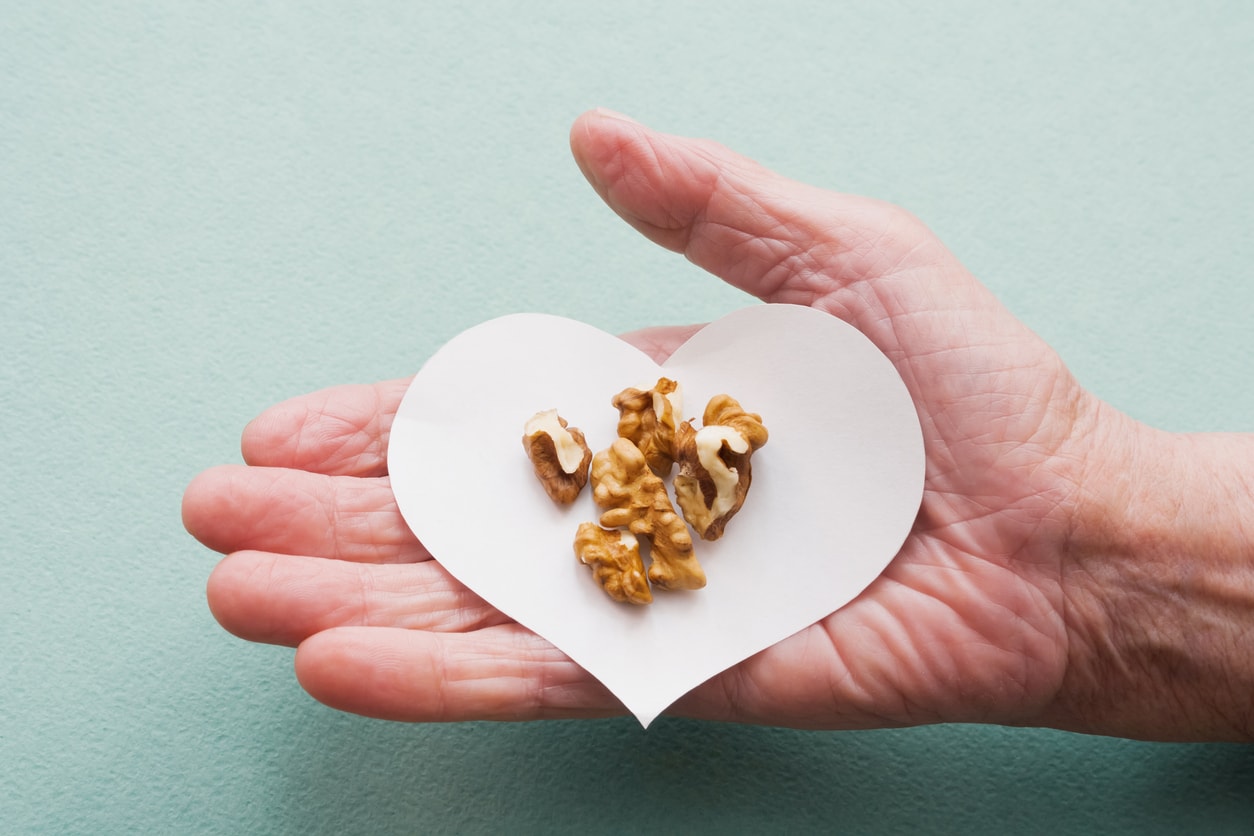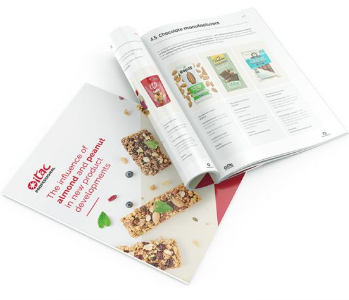In 2050, over 2 billion people around the world will be over 60 years. The elderly are the fastest-growing population segment in the world, and this fact does not go unnoticed by industrial manufacturers and their new formulations. What are the ideal foods for elderly? Why does adding nuts and its processed forms in formulations enable the design of functional foods for seniors? Keep reading.
Some information to put things in context
According to information by the World Health Organisation, by 2033 there will be 44 countries where over 20% of their population will be over 65 years of age, including countries such as Spain, Italy, Germany or the United Kingdom.
If we focus on the behaviour of the elderly when it comes to their diets, and according to a recent study, 64% of seniors make a greater effort than before to have a healthier diet, and 42% relies on diets to relieve their main ailments. At the time there is a market or niche of opportunity for food manufacturers to develop functional products targeted at this population segment.
What happens with the development of products for this niche? The number of product developments for millennials and Gen Z –the new generations– vastly exceeds the one for generations of old age such as the Silver Surfers and Baby Boomers. This should not be seen as a problem today, but rather as a major opportunity.
Physiological changes linked to old age
New product developments for groups of old age take into consideration physiological changes such as1:
- Loss of smell and taste: the elderly may experience a significant loss of these senses. Only sweet tastes remain intact. For this reason, it is a real challenge for industrial manufacturers to be able to compensate for these loses in product lines aimed at the elderly.
- Digestive problems: constipation tends to cause a feeling of fullness. Fibre-rich products are essential for this market segment.
- Difficulty chewing: it is important to consider that tooth loss increases the risk of weight loss and malnutrition.
- Reduced food nutrient absorption: the digestive system tends to absorb a lower amount of nutrients. This is the case, for example, for Vitamin B12, iron and calcium.
- Reduced Vitamin D: the physiological processes related to ageing cause the need to increase the consumption of foods that are rich in this important vitamin.
The influence of nuts in the food industry
Due to their many active compounds, nuts such as peanuts, for example, delay ageing and help prevent illnesses linked to old age.
Just to name a few examples, these foods are rich in monounsaturated and polyunsaturated acids, which are highly beneficial when it comes to heart-related problems or high cholesterol. Furthermore, some nuts such as walnuts have a high content of antioxidants, while many of them –the ones who have skins– have high levels of fibre, which is highly beneficial to gut health.
Additionally, they are also a good source of energy and have a high content of fat (heart-healthy fat), calcium, magnesium, iron, zinc and vitamin C.
Lastly, according to the European Society for Clinical Nutrition and Metabolism, seniors must increase the consumption of proteins by 25% to 50%. In this regard, nuts help strengthen the protein profile of a formulation, helping the elderly address that need and thereby maintain a greater autonomy and independence.
What strategy should the food industry follow when it comes to connecting with the needs of the elderly?
Nuts such as peanuts, for example, are great allies to address the nutritional challenges of these new development (NPD) profiles. Success depends on abiding by these 3 lines of action:
- Developing softer textures.
- Formulating more flavour-rich products.
- Expanding or diversifying the offer of products with functional benefits.
Here it is increasingly common to include processed form of nuts such as pastes and flours in a myriad of sectors, such as industrial bakery, confectionery, snacks, ice creams and breakfasts, among others.
Importaco, your ally in the manufacturing of products and foods for seniors
Importaco has been working in the development of a product line that is fully tailored to the needs of the client. ‘Customer-Centric Experience’ is the name of the program based on neuroscience and methodology, which has successfully enabled the tailoring of offers to the expectations of each client. This has resulted in an innovation on various retail and industrial products, among which we can mention an assortment of nut pastes.
Pastes are also a good product form tailored to the needs of elderly consumer profiles, since this ingredient is easy to chew and swallow, also incorporating the nutritional benefits of nuts.
Keep learning: Food product development: new ingredients and strategies
Additionally, in line with the development of functional foods, the R&D department of Importaco has demonstrated that nuts are a source of probiotic microorganisms that are beneficial to people’s health, having identified certain variants that have antioxidant, anti-inflammatory and immune-boosting effects. Based on this, work is performed on almond and walnut variants enriched with these probiotics.
Are you looking to develop new foods for people of old age? Do you want more information about our products, their origin and their organoleptic properties? Contact us
DISCOVER THE LATEST INNOVATIONS WITH ALMONDS AND PEANUTS IN NEW PRODUCT DEVELOPMENTS
Sources:
1 Aramark and Fundación Hospitales Nisa. Guía alimentaria para personas mayores.
Food Navigator. Nut supplier Importaco cracking the healthy ageing market: ‘Everybody is targeting older people’
Alimarket. Informe – Frutos Secos. Noviembre 2021. La consolidación del sector atrae nuevos actores







